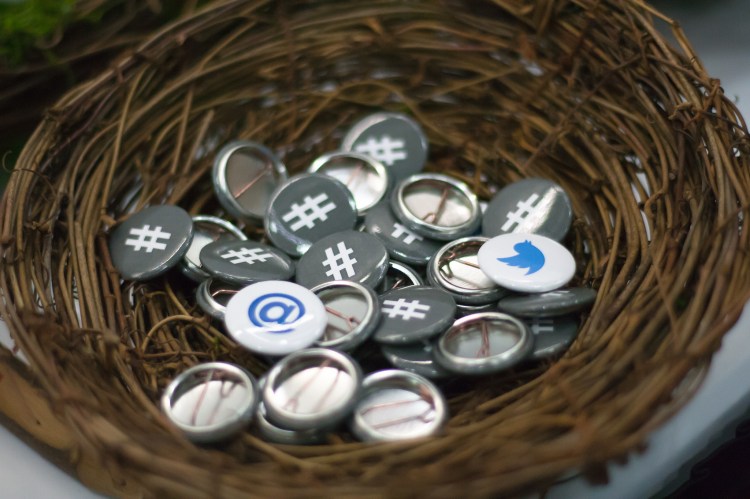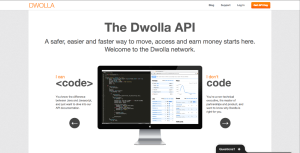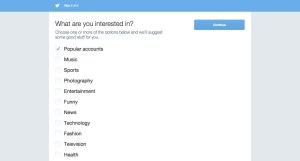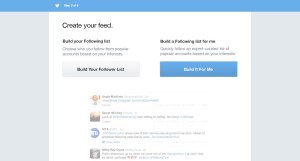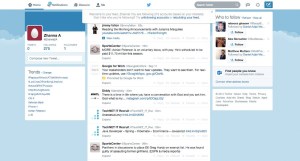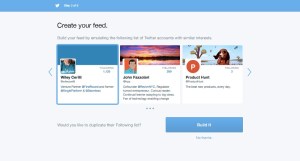I love Twitter — I get so much value from it. I never want it to go away and I actually have a bet with a friend that Twitter will be here in 20 years. Twitter was also the first network I added to my company.
But, Twitter has an onboarding problem.
This problem stems from the simple fact that it is not simple or easy for a new user to learn how to use Twitter to maximum benefit. It takes a lot of work to make Twitter work for you.
I believe Twitter’s growth numbers have slowed in recent years because it has failed at product education and making the sign-up process easy. Twitter is doing a great job monetizing, but it seems a little ridiculous that most people don’t know that if you start a tweet with an @ mention, that only the people who follow you and that handle will see it in their feed (here’s a quick fix).
Still, I think there is a solution to its onboarding problem.
One thought before jumping in. Most people I know learned to properly use Twitter from a friend or family member. I learned how to use it when I joined Aviary in 2010. @msg and @mayafish said I needed to get on active on Twitter and gave me a Twitter 101 sit down. I taught my wife (@liztaub) and my mom (@hindytaub). My mom taught my dad (@rubytaub) and on and on. I’ve heard this type of situation with many others and think Twitter might want to invest a little time and effort in local events. I think it will go a long way with the snowball effect of friends/family teaching friends/family.
Now onto the onboarding process.
First let’s diagnose the main problem. It’s hard for individuals to understand the value in Twitter. From the sign-up process to becoming an active user, they are not building the optimal follow list for their respective interests. This leads them to not use the product often. I think this is fair reasoning. So the solution needs to be: how can Twitter get new users to a point where they are following enough of the right people to come back and use Twitter as their #1 source of information?
The current sign-up process requires someone to be a self-starter. It’s a major undertaking to find good people to follow. And most regular people are looking for shortcuts on a daily basis. They don’t want to take 30 minutes to follow a few hundred people to have a steady flow of news. They want things done for them and they want it to be good. This general life mentality is at odds with the way Twitter runs its sign-up flow and I think that is where the split of active users versus. non-active users happen. I don’t think Twitter releases total sign ups versus active users but I imagine there is a major discrepancy — more than your normal consumer-facing company. So, how does Twitter solve this pretty big problem?
I’ve thought about it a lot. I’m in a unique situation because I speak to a lot of Twitter users, mostly brands, but a sprinkle of individuals. This is something I do all day, given that I am the co-founder of SocialRank (a company that helps brands find out more about their followers on Twitter and pulls them into a central location , sort of like a Hootsuite but for followers).
Before founding SocialRank, I was running the business side of the API platform for payments company Dwolla with my now co-founder Michael, who led the technical side.
When we joined Dwolla we knew that the developer portal needed a huge facelift. At the time it was just a bunch of developer docs, which was great, but the problem was non-technical people couldn’t understand how they could leverage the API for their company. A common scenario we saw was that a CEO, head of product, business lead or someone else would come in trying to understand Dwolla and what they could do with the API, but were ultimately discouraged because there was no clear path for them. They didn’t understand the developer documentation, so we lost a potential merchant or partner.
What we did was build an entry point (developers.dwolla.com) that had two paths, one for technical people and the other for non-technical folks. You either code or you don’t. If you do code, you go down the coding path and see the developer documentation, helper libraries and more. If you don’t code, you go down the path to see what the API’s capabilities are, how other merchants are using the API, and more. The flow worked out really well, API usage grew and a lot of developer sections copied it because of the success.
So how does this relate to Twitter’s sign-up process? I think there needs to be a path split at the most important point of Twitter’s sign-up process. But, instead of “Code” and “Don’t Code” it is “Build your follow list” and “Build it for me.” Let’s dig in as to how I think it should work.
Twitter already does a really good job right after sign-up by asking you what your interests are. Once you finish ticking off your interests, though, is where I think they are missing a step. Here is where I would add the split path. One path to build your follow list as normal and one to have it built for you. If you click “Build your follow list,” you go through the existing way of onboarding — this is for those self-starters that naturally figure out how to use this crazy thing they call Twitter.
If you click “Build it for me!” that’s when things get interesting. There are a few ways to approach this, but let’s look at three.
1.
Once a person itemizes their interests in the previous step, Twitter can build an optimal follow list of 100–300 accounts that are awesome in these interests. So for example if you selected an interest in sports, tech, and rap and hip hop music you’d get a list of appropriate people to follow. Your sports list might include everyone from Bill Simmons and Kobe Bryant to a sports writer for the NY Times and A-Rod. For tech, you’d have everyone from Elon Musk, Tim Cook and Fred Wilson to Marc Andreessen, Drew Houston and Marissa Mayer; and for Music you’d have accounts like 50 Cent, Drake, Eminem, Iggy Azalea and Macklemore.
The list should include a combination of popular accounts (i.e. industry-celebrities) as well as people that have a highly engaged follower base. Twitter, you already have this data, so go and make awesome follower lists. Then a new user just has to learn how to perfect that follow list — adding new accounts and removing accounts, and learning what to tweet and how RTs, Favs and @ mentions work.
2.
On this next path, Twitter will ask a new user who they want to emulate after they list their interests. Instead of building an optimal follow list for them, suggest a few people that have the same interests as they do and offer them the opportunity to carbon copy someone else’s follow list.
This is a riskier approach, because follow lists are a combination of interests and personal contacts. So for example if someone had similar interests to me and decided to follow the people I follow in one fell swoop enabled by Twitter, they would get sports, media, tech but also get my friends, family and more. I don’t follow a lot of friends and family, maybe 20–50 accounts total, but enough to throw people off. It would be interesting if Twitter could do the carbon copy but remove the smaller friend and family accounts. In other words, take the top 75% in terms of follower count or engagement and start someone there.
3.
The third path uses Twitter Lists. In this path Twitter would take very popular lists and use them as suggested follow lists — not to follow as a traditional list, but to follow the accounts within the list. This is another great starting point as Twitter will have a good sense of who likes what type of lists. Extracting those accounts out and building a follow list for a new user can be a good path to success.
Conclusion
I believe that if Twitter starts thinking about splitting new users into two types, the ones that want to select their followers for themselves and the ones that want to be told who to follow based on interests, Twitter will be able to A/B test and find optimal paths to activity as well as continue to tinker with the massive amounts of data they have and make the suggestions 100 times better.
Alex Taub is co-founder of Social Rank, an application that organizes and analyzes your Twitter followers. Find him at @ajt or Alex@SocialRank.com
VentureBeat's mission is to be a digital town square for technical decision-makers to gain knowledge about transformative enterprise technology and transact. Learn More
